
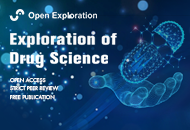

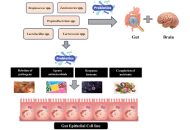
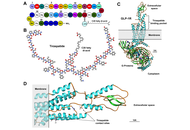
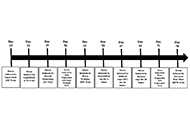
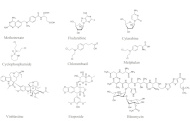
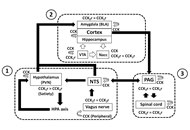
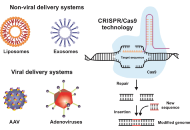
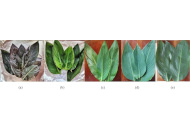
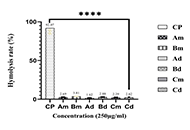
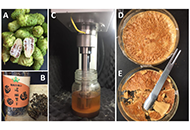
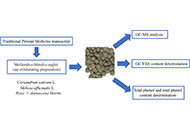
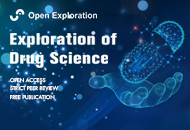
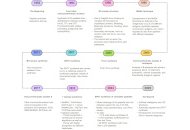

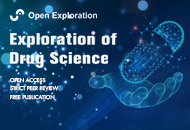
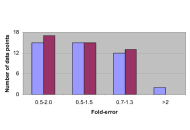
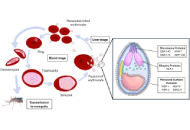


Metabolic dysfunction-associated steatohepatitis (MASH) is emerging as a leading cause of cirrhosis, hepatocellular carcinoma, and liver-related mortality worldwide. Among the most advanced pharmacologic candidates are resmetirom, a highly liver-selective thyroid hormone receptor-β (THR-β) agonist, and semaglutide, a long-acting glucagon-like peptide-1 receptor agonist (GLP-1 RA) already approved for diabetes and obesity. Although both agents improve hepatic steatosis, their mechanisms of action, extra-hepatic benefits, and safety signatures diverge markedly. Resmetirom, which was approved by the Food and Drug Administration (FDA) in March 2024, acts hepatocentrically to accelerate β-oxidation, lower atherogenic lipoproteins, and deliver early signals necessary for fibrosis regression, all while largely avoiding systemic thyrotoxic effects. Semaglutide acts systemically by reducing caloric load through pronounced weight loss and glycemic control, producing the highest rates of histologic MASH resolution reported to date, albeit with less direct antifibrotic efficacy and characteristic gastrointestinal tolerability issues. This comparative perspective juxtaposes the two compounds with respect to molecular pharmacology, clinical efficacy, safety, and potential clinical positioning, and proposes that, because resmetirom primarily targets hepatic lipid disposal whereas semaglutide unloads systemic caloric pressure, their complementary actions could be harnessed sequentially or in combination to achieve broader, more durable disease modification across the heterogeneous spectrum of patients with MASH.
Metabolic dysfunction-associated steatohepatitis (MASH) is emerging as a leading cause of cirrhosis, hepatocellular carcinoma, and liver-related mortality worldwide. Among the most advanced pharmacologic candidates are resmetirom, a highly liver-selective thyroid hormone receptor-β (THR-β) agonist, and semaglutide, a long-acting glucagon-like peptide-1 receptor agonist (GLP-1 RA) already approved for diabetes and obesity. Although both agents improve hepatic steatosis, their mechanisms of action, extra-hepatic benefits, and safety signatures diverge markedly. Resmetirom, which was approved by the Food and Drug Administration (FDA) in March 2024, acts hepatocentrically to accelerate β-oxidation, lower atherogenic lipoproteins, and deliver early signals necessary for fibrosis regression, all while largely avoiding systemic thyrotoxic effects. Semaglutide acts systemically by reducing caloric load through pronounced weight loss and glycemic control, producing the highest rates of histologic MASH resolution reported to date, albeit with less direct antifibrotic efficacy and characteristic gastrointestinal tolerability issues. This comparative perspective juxtaposes the two compounds with respect to molecular pharmacology, clinical efficacy, safety, and potential clinical positioning, and proposes that, because resmetirom primarily targets hepatic lipid disposal whereas semaglutide unloads systemic caloric pressure, their complementary actions could be harnessed sequentially or in combination to achieve broader, more durable disease modification across the heterogeneous spectrum of patients with MASH.
DOI: https://doi.org/10.37349/eds.2025.1008132
This article belongs to the special issue Innovative Therapeutics in Hepato-Gastroenterology

Cedarwood essential oil (CWO), obtained from Cedrus and related species, has a long history in traditional medicine but remains relatively underexplored in modern pharmacology. This review consolidates current evidence on its phytochemical composition and pharmacological activities. Literature was retrieved from PubMed, Web of Science, and Scopus up to July 2025, including in vitro, in vivo, and limited clinical studies. Findings suggest antimicrobial, anti-inflammatory, sedative, and dermatological properties, primarily attributed to sesquiterpenes such as cedrol and α-cedrene. However, most data derive from small-scale or preclinical studies, with limited standardization of dosage and formulations. Safety aspects and toxicological gaps are also highlighted as essential considerations for future clinical translation. We conclude that CWO shows therapeutic potential, but rigorous clinical trials, standardized protocols, and comprehensive toxicological evaluations are essential before its safe and effective integration into evidence-based practice.
Cedarwood essential oil (CWO), obtained from Cedrus and related species, has a long history in traditional medicine but remains relatively underexplored in modern pharmacology. This review consolidates current evidence on its phytochemical composition and pharmacological activities. Literature was retrieved from PubMed, Web of Science, and Scopus up to July 2025, including in vitro, in vivo, and limited clinical studies. Findings suggest antimicrobial, anti-inflammatory, sedative, and dermatological properties, primarily attributed to sesquiterpenes such as cedrol and α-cedrene. However, most data derive from small-scale or preclinical studies, with limited standardization of dosage and formulations. Safety aspects and toxicological gaps are also highlighted as essential considerations for future clinical translation. We conclude that CWO shows therapeutic potential, but rigorous clinical trials, standardized protocols, and comprehensive toxicological evaluations are essential before its safe and effective integration into evidence-based practice.
DOI: https://doi.org/10.37349/eds.2025.1008131
This article belongs to the special issue Essential Oils: Insights into Pharmacology, In Vivo, In Vitro and In Silico Studies

DOI: https://doi.org/10.37349/eds.2025.1008130

Probiotics, originating at birth, play a crucial role in the development and maintenance of a healthy and disease-free environment within the gut of both humans and animals. These beneficial microorganisms from fermented, processed, and non-dairy foods provide numerous health benefits, such as stress reduction, disease prevention, immune stimulation, gut microbiota control, nutritional supplementation, diarrheal disease relief, vitamin production, weight management, and anticancer activities. With more health problems on the rise and the negative side effects of conventional medication and antibiotics prevailing, natural supplements such as probiotics are a relief. Probiotics, such as Lactobacillus, Bifidobacterium, and Saccharomyces, have been identified as safe and effective candidates for gut health applications. This review addresses the current understanding of the mechanism of action of probiotics, their functions in human health, and their therapeutic potential for various diseases. We emphasize the importance of prioritizing probiotic administration along with conventional medicinal drugs for their wide benefits and fewer side effects. Our findings aim to direct future studies on the modes of action of probiotics against emerging health challenges.
Probiotics, originating at birth, play a crucial role in the development and maintenance of a healthy and disease-free environment within the gut of both humans and animals. These beneficial microorganisms from fermented, processed, and non-dairy foods provide numerous health benefits, such as stress reduction, disease prevention, immune stimulation, gut microbiota control, nutritional supplementation, diarrheal disease relief, vitamin production, weight management, and anticancer activities. With more health problems on the rise and the negative side effects of conventional medication and antibiotics prevailing, natural supplements such as probiotics are a relief. Probiotics, such as Lactobacillus, Bifidobacterium, and Saccharomyces, have been identified as safe and effective candidates for gut health applications. This review addresses the current understanding of the mechanism of action of probiotics, their functions in human health, and their therapeutic potential for various diseases. We emphasize the importance of prioritizing probiotic administration along with conventional medicinal drugs for their wide benefits and fewer side effects. Our findings aim to direct future studies on the modes of action of probiotics against emerging health challenges.
DOI: https://doi.org/10.37349/eds.2025.1008129

Metabolic dysfunction-associated steatotic liver disease (MASLD) and its more rapidly progressive variant steatohepatitis (MASH) are widespread chronic liver conditions linked to obesity and other common metabolic disorders. The emergence of tirzepatide, a dual incretin receptor agonist targeting both the glucose-dependent insulinotropic polypeptide (GIP) and glucagon-like peptide-1 (GLP-1) receptors, presents major therapeutic potential for MASLD. This review article explores the mechanisms of action of tirzepatide, highlighting its ability to improve glycemic control, promote weight loss, and potentially ameliorate hepatic steatosis and fibrosis. Recent studies suggest that tirzepatide may offer significant benefits in managing MASLD/MASH by modulating metabolic pathways and enhancing liver health. However, further research is needed to fully understand its long-term impact on MASLD/MASH progression and outcomes across diverse patient populations.
Metabolic dysfunction-associated steatotic liver disease (MASLD) and its more rapidly progressive variant steatohepatitis (MASH) are widespread chronic liver conditions linked to obesity and other common metabolic disorders. The emergence of tirzepatide, a dual incretin receptor agonist targeting both the glucose-dependent insulinotropic polypeptide (GIP) and glucagon-like peptide-1 (GLP-1) receptors, presents major therapeutic potential for MASLD. This review article explores the mechanisms of action of tirzepatide, highlighting its ability to improve glycemic control, promote weight loss, and potentially ameliorate hepatic steatosis and fibrosis. Recent studies suggest that tirzepatide may offer significant benefits in managing MASLD/MASH by modulating metabolic pathways and enhancing liver health. However, further research is needed to fully understand its long-term impact on MASLD/MASH progression and outcomes across diverse patient populations.
DOI: https://doi.org/10.37349/eds.2025.1008128

Aim:
Menopausal women are suffering from stress-related disorders, and in the previous studies, Khaya anthotheca (K. anthotheca) decoction exhibited estrogenic and anxiolytic properties. Taken together, the aim of this study was to evaluate the effects of K. anthotheca decoction on behavioral disorders and oxidative stress induced by repeated variable stress in ovariectomized Wistar rats.
Methods:
Forty-two female Wistar rats (10–12 weeks old; 145 ± 10 g) were used. They were ovariectomized (except those from the sham operated group). Fourteen days after ovariectomy, animals were randomly distributed into 7 groups (n = 6): sham operated and negative control groups receiving distilled water; two positive control groups receiving estradiol valerate and diazepam (1 mg/kg each), and three other groups receiving the tested doses of K. anthotheca extract (125, 250, and 500 mg/kg each). The treatment was applied every week. Anxiety, depression, and motor coordination were assessed throughout the experimental procedure. The anti-oxidative potential of the extract was evaluated in rat brain homogenate.
Results:
It was noted that K. anthotheca extract induced anxiolytic effects marked by an increase in the locomotory activity during open field, light/dark, and elevated plus maze tests. Besides, its anti-depressive effects were shown by a significant (p < 0.05) decrease in the immobilization time during the forced swimming test. By improving the suspension time during grid and wire grip tests, the distance covered, and the number of switch directions during the beam walking test, the extract increased motor coordination. The antioxidant potential of the extract was marked by a significant decrease (p < 0.01) in malondialdehyde level and an increase (p < 0.05) in reduced glutathione level.
Conclusions:
These results provide valuable insights into the potential therapeutic application of the K. anthotheca extract; however, more studies are needed to elucidate mechanisms of action.
Aim:
Menopausal women are suffering from stress-related disorders, and in the previous studies, Khaya anthotheca (K. anthotheca) decoction exhibited estrogenic and anxiolytic properties. Taken together, the aim of this study was to evaluate the effects of K. anthotheca decoction on behavioral disorders and oxidative stress induced by repeated variable stress in ovariectomized Wistar rats.
Methods:
Forty-two female Wistar rats (10–12 weeks old; 145 ± 10 g) were used. They were ovariectomized (except those from the sham operated group). Fourteen days after ovariectomy, animals were randomly distributed into 7 groups (n = 6): sham operated and negative control groups receiving distilled water; two positive control groups receiving estradiol valerate and diazepam (1 mg/kg each), and three other groups receiving the tested doses of K. anthotheca extract (125, 250, and 500 mg/kg each). The treatment was applied every week. Anxiety, depression, and motor coordination were assessed throughout the experimental procedure. The anti-oxidative potential of the extract was evaluated in rat brain homogenate.
Results:
It was noted that K. anthotheca extract induced anxiolytic effects marked by an increase in the locomotory activity during open field, light/dark, and elevated plus maze tests. Besides, its anti-depressive effects were shown by a significant (p < 0.05) decrease in the immobilization time during the forced swimming test. By improving the suspension time during grid and wire grip tests, the distance covered, and the number of switch directions during the beam walking test, the extract increased motor coordination. The antioxidant potential of the extract was marked by a significant decrease (p < 0.01) in malondialdehyde level and an increase (p < 0.05) in reduced glutathione level.
Conclusions:
These results provide valuable insights into the potential therapeutic application of the K. anthotheca extract; however, more studies are needed to elucidate mechanisms of action.
DOI: https://doi.org/10.37349/eds.2025.1008127

Nanotechnology is a relatively young field of science that has found wide application in medicine, especially in oncology. It focuses on studying molecules at the atomic, molecular, and supramolecular levels, enabling the development of innovative therapeutic solutions. Thanks to research in this field, it has become possible to introduce nanoparticles (NPs) into therapy, specially designed molecules that release the drug in a precisely defined place. This approach allows for maintaining the appropriate therapeutic concentration of the drug substance in the body for a longer period of time. The use of NPs in the treatment of cancer diseases helps to overcome the limitations of traditional chemotherapy, such as systemic, toxic effects of drugs, lack of specificity towards cancer cells, and limited bioavailability. NPs can be used not only as drug carriers, but also as contrast agents enabling imaging at the molecular level. More accurate visualization of diseased tissues is possible thanks to the small size of NPs, optical properties, and the ability to accumulate in the tumor area. Additionally, the use of specific ligands allows detection of pathological changes at the cellular level, allowing for earlier detection of changes, which in turn increases the probability of complete recovery of the patient.
Nanotechnology is a relatively young field of science that has found wide application in medicine, especially in oncology. It focuses on studying molecules at the atomic, molecular, and supramolecular levels, enabling the development of innovative therapeutic solutions. Thanks to research in this field, it has become possible to introduce nanoparticles (NPs) into therapy, specially designed molecules that release the drug in a precisely defined place. This approach allows for maintaining the appropriate therapeutic concentration of the drug substance in the body for a longer period of time. The use of NPs in the treatment of cancer diseases helps to overcome the limitations of traditional chemotherapy, such as systemic, toxic effects of drugs, lack of specificity towards cancer cells, and limited bioavailability. NPs can be used not only as drug carriers, but also as contrast agents enabling imaging at the molecular level. More accurate visualization of diseased tissues is possible thanks to the small size of NPs, optical properties, and the ability to accumulate in the tumor area. Additionally, the use of specific ligands allows detection of pathological changes at the cellular level, allowing for earlier detection of changes, which in turn increases the probability of complete recovery of the patient.
DOI: https://doi.org/10.37349/eds.2025.1008126

Cholecystokinin (CCK) is the most prevalent neuropeptide in the brain, where it affects satiety, pain modulation, memory, and anxiety. Its effects are mediated by GPCRs known as the “alimentary (gastrointestinal)” CCK1r (CCK 1 receptor) and the brain-specific CCK2r (CCK 2 receptor). While stress causes CCK to be released and full CCK2r agonists are potent panicogenic agents, specific CCK2r antagonists are ineffective at lowering human anxiety. As a result, the therapeutic potential of CCK as a target in psychiatry has been questioned. By compiling relevant new and historical scientific data retrieved from Scopus and PubMed, the aim of this review was to suggest a new function of CCK neurotransmission, the regulation of neuronal homeostasis during stress. Four lines of evidence were discussed that support the hypothesis of a CCK-driven neuronal homoestasis: (1) Homeostatic plasticity including synaptic scaling and intrinsic excitability; (2) its interaction with retrograde endocannabinoid signaling; (3) neuroprotective role; and (4) dynamic neuromodulation of CCK release. CCK functions as a crucial and essential molecular switch of neural circuits and neuroplasticity through its remarkable cell-specific modulation of glutamate and GABA release via CCK2r. CCKergic neurons are downstream of the activation of cannabinoid type-1 (CB1) receptors in order to generate and stabilize rhythmic synchronous network activity in the hippocampus. CCK is also released to modulate other neurotransmitters like dopamine and opioids when neuronal firing is intense during the processing of anxiety/fear, memory, and pain. CCK likely functions to restore baseline neuronal function and protect neurons from harm under these conditions. Anxiety, depression, and schizophrenia could result from compensatory plastic changes of the CCKergic system that go awry during neuronal homeostasis. This review concludes by examining the benefits of putative compounds that exhibit a combination of CCK agonist and antagonist activity at multiple locations within the CCKergic system, as well as off-targets in managing mental conditions.
Cholecystokinin (CCK) is the most prevalent neuropeptide in the brain, where it affects satiety, pain modulation, memory, and anxiety. Its effects are mediated by GPCRs known as the “alimentary (gastrointestinal)” CCK1r (CCK 1 receptor) and the brain-specific CCK2r (CCK 2 receptor). While stress causes CCK to be released and full CCK2r agonists are potent panicogenic agents, specific CCK2r antagonists are ineffective at lowering human anxiety. As a result, the therapeutic potential of CCK as a target in psychiatry has been questioned. By compiling relevant new and historical scientific data retrieved from Scopus and PubMed, the aim of this review was to suggest a new function of CCK neurotransmission, the regulation of neuronal homeostasis during stress. Four lines of evidence were discussed that support the hypothesis of a CCK-driven neuronal homoestasis: (1) Homeostatic plasticity including synaptic scaling and intrinsic excitability; (2) its interaction with retrograde endocannabinoid signaling; (3) neuroprotective role; and (4) dynamic neuromodulation of CCK release. CCK functions as a crucial and essential molecular switch of neural circuits and neuroplasticity through its remarkable cell-specific modulation of glutamate and GABA release via CCK2r. CCKergic neurons are downstream of the activation of cannabinoid type-1 (CB1) receptors in order to generate and stabilize rhythmic synchronous network activity in the hippocampus. CCK is also released to modulate other neurotransmitters like dopamine and opioids when neuronal firing is intense during the processing of anxiety/fear, memory, and pain. CCK likely functions to restore baseline neuronal function and protect neurons from harm under these conditions. Anxiety, depression, and schizophrenia could result from compensatory plastic changes of the CCKergic system that go awry during neuronal homeostasis. This review concludes by examining the benefits of putative compounds that exhibit a combination of CCK agonist and antagonist activity at multiple locations within the CCKergic system, as well as off-targets in managing mental conditions.
DOI: https://doi.org/10.37349/eds.2025.1008125

Gene-based medicine is transforming modern healthcare by offering precise, personalized interventions that target the genetic causes of disease. Breakthroughs in gene editing technologies, including clustered regularly interspaced short palindromic repeat (CRISPR)-associated (Cas) nuclease technologies (CRISPR-Cas9), base editing, and prime editing, are enabling promising therapeutic applications for rare inherited disorders and complex conditions like cancer. Furthermore, improvements in both viral and non-viral delivery methods are expanding clinical possibilities and enhancing safety measures. Despite these advancements, challenges such as off-target effects, ethical considerations, production complexities, and high costs continue to hinder widespread adoption. This review explores current innovations in gene-based medicine, addresses remaining obstacles, and outlines future directions, emphasizing the transformative potential of genomic-driven therapies for patients worldwide.
Gene-based medicine is transforming modern healthcare by offering precise, personalized interventions that target the genetic causes of disease. Breakthroughs in gene editing technologies, including clustered regularly interspaced short palindromic repeat (CRISPR)-associated (Cas) nuclease technologies (CRISPR-Cas9), base editing, and prime editing, are enabling promising therapeutic applications for rare inherited disorders and complex conditions like cancer. Furthermore, improvements in both viral and non-viral delivery methods are expanding clinical possibilities and enhancing safety measures. Despite these advancements, challenges such as off-target effects, ethical considerations, production complexities, and high costs continue to hinder widespread adoption. This review explores current innovations in gene-based medicine, addresses remaining obstacles, and outlines future directions, emphasizing the transformative potential of genomic-driven therapies for patients worldwide.
DOI: https://doi.org/10.37349/eds.2025.1008124
This article belongs to the special issue Advances and Innovations in Gene-Based Medicine

Aim:
The science of manipulating matter at almost atomic scales to create new structures and devices that function at nanoscale dimensions is known as nanotechnology, which is essential to many sciences, such as medicine and environment. This field of study has been reported to investigate better alternatives for the advancement of medicine; one such alternative is the use of plants, which contain substantial amounts of essential phytochemicals. This study aims to utilize such a plant species, Canna indica (C. indica) leaves, known as traditional medicinal plants or commonly grown plants, to synthesize silver nanoparticles (AgNPs) and evaluate their potential in green medicine.
Methods:
The synthesis was carried out using five varieties of leaf water extracts: Pink red, Yellow, Pink, Yellow red, and Red, under different conditions, to which scanning electron microscopy was performed. The antioxidant capacity was evaluated by total flavonoid content, total phenolic content, total antioxidant capacity, and 2,2-diphenyl-1-picrylhydrazyl radical scavenging assay. The antibacterial activity of AgNPs and water extracts was evaluated against Staphylococcus aureus (S. aureus) and Escherichia coli (E. coli). Finally, the cytotoxicity of AgNP is evaluated using the brine shrimp lethality assay.
Results:
The optimum condition for AgNP synthesis was determined to be room temperature, and Pink_AgNPs were observed as spherical with a size of 27–48 nm in scanning electron microscopy. The antioxidant assays concluded that AgNPs show significantly higher antioxidant capacity and exhibit higher scavenging activity. This study’s findings showed the efficiency of AgNPs against both strains, and higher efficiency against S. aureus. It was observed that with 240 ppm of AgNPs, 100% viability is obtained.
Conclusions:
These novel findings emphasize the significance of C. indica AgNPs, their promise in the medical field, and their application in manufacturing green medicine for environmentally friendly healthcare.
Aim:
The science of manipulating matter at almost atomic scales to create new structures and devices that function at nanoscale dimensions is known as nanotechnology, which is essential to many sciences, such as medicine and environment. This field of study has been reported to investigate better alternatives for the advancement of medicine; one such alternative is the use of plants, which contain substantial amounts of essential phytochemicals. This study aims to utilize such a plant species, Canna indica (C. indica) leaves, known as traditional medicinal plants or commonly grown plants, to synthesize silver nanoparticles (AgNPs) and evaluate their potential in green medicine.
Methods:
The synthesis was carried out using five varieties of leaf water extracts: Pink red, Yellow, Pink, Yellow red, and Red, under different conditions, to which scanning electron microscopy was performed. The antioxidant capacity was evaluated by total flavonoid content, total phenolic content, total antioxidant capacity, and 2,2-diphenyl-1-picrylhydrazyl radical scavenging assay. The antibacterial activity of AgNPs and water extracts was evaluated against Staphylococcus aureus (S. aureus) and Escherichia coli (E. coli). Finally, the cytotoxicity of AgNP is evaluated using the brine shrimp lethality assay.
Results:
The optimum condition for AgNP synthesis was determined to be room temperature, and Pink_AgNPs were observed as spherical with a size of 27–48 nm in scanning electron microscopy. The antioxidant assays concluded that AgNPs show significantly higher antioxidant capacity and exhibit higher scavenging activity. This study’s findings showed the efficiency of AgNPs against both strains, and higher efficiency against S. aureus. It was observed that with 240 ppm of AgNPs, 100% viability is obtained.
Conclusions:
These novel findings emphasize the significance of C. indica AgNPs, their promise in the medical field, and their application in manufacturing green medicine for environmentally friendly healthcare.
DOI: https://doi.org/10.37349/eds.2025.1008123
This article belongs to the special issue Greening Drug Manufacturing for a Sustainable Healthcare

Aim:
This study evaluates the in vitro and in vivo antiplasmodial, hemolytic, and antioxidant activities of a combined extract of Ageratum conyzoides (A. conyzoides) and Bidens pilosa (B. pilosa), a traditionally used but scientifically unvalidated combination.
Methods:
Plant leaves were extracted via aqueous decoction and cold maceration, combining equal parts to mimic traditional preparation. In vitro antiplasmodial activity against the chloroquine-sensitive Plasmodium falciparum 3D7 (Pf3D7) strain was assessed using the SYBR Green I assay. Cytotoxicity was evaluated via hemolysis test, and antioxidant potential using DPPH (2,2-diphenyl-1-picrylhydrazyl), ABTS [2,2'-azino-bis(3-ethylbenzothiazoline-6-sulfonic acid)], and FRAP (ferric ion reducing antioxidant potential) assays. The most potent combination was tested for acute toxicity and curative antimalarial activity in a rodent model.
Results:
Extract yields ranged from 6.6% (cold maceration extract of B. pilosa) to 29.2% [aqueous decoction extract of combination (Cd)]. Extracts showed moderate to mild in vitro antiplasmodial activity [IC50 (median inhibitory concentration): 24.8–96.6 µg/mL], with the aqueous Cd showing potential synergism [CI (combination index) < 1]. No significant cytotoxicity was observed (< 10% hemolysis). Moderate to good antioxidant activity was found in DPPH [SC50 (median scavenging concentration): 134.65–307.55 µg/mL] and ABTS assays (SC50: 92.23–183.45 µg/mL), with Cd showing the highest activity. FRAP values were low. The Cd extract demonstrated no significant acute toxicity up to 5,000 mg/kg and significant in vivo antimalarial activity, achieving 65% parasite inhibition at 200 mg/kg/day. It also prolonged survival time, with a maximum survival of 28 days at 200 mg/kg/day.
Conclusions:
This preliminary investigation suggests that combined extracts of A. conyzoides and B. pilosa exhibit noteworthy in vitro and in vivo antiplasmodial activity against the tested strains. Further studies are warranted to validate these findings and develop optimized formulations as potential antimalarials.
Aim:
This study evaluates the in vitro and in vivo antiplasmodial, hemolytic, and antioxidant activities of a combined extract of Ageratum conyzoides (A. conyzoides) and Bidens pilosa (B. pilosa), a traditionally used but scientifically unvalidated combination.
Methods:
Plant leaves were extracted via aqueous decoction and cold maceration, combining equal parts to mimic traditional preparation. In vitro antiplasmodial activity against the chloroquine-sensitive Plasmodium falciparum 3D7 (Pf3D7) strain was assessed using the SYBR Green I assay. Cytotoxicity was evaluated via hemolysis test, and antioxidant potential using DPPH (2,2-diphenyl-1-picrylhydrazyl), ABTS [2,2'-azino-bis(3-ethylbenzothiazoline-6-sulfonic acid)], and FRAP (ferric ion reducing antioxidant potential) assays. The most potent combination was tested for acute toxicity and curative antimalarial activity in a rodent model.
Results:
Extract yields ranged from 6.6% (cold maceration extract of B. pilosa) to 29.2% [aqueous decoction extract of combination (Cd)]. Extracts showed moderate to mild in vitro antiplasmodial activity [IC50 (median inhibitory concentration): 24.8–96.6 µg/mL], with the aqueous Cd showing potential synergism [CI (combination index) < 1]. No significant cytotoxicity was observed (< 10% hemolysis). Moderate to good antioxidant activity was found in DPPH [SC50 (median scavenging concentration): 134.65–307.55 µg/mL] and ABTS assays (SC50: 92.23–183.45 µg/mL), with Cd showing the highest activity. FRAP values were low. The Cd extract demonstrated no significant acute toxicity up to 5,000 mg/kg and significant in vivo antimalarial activity, achieving 65% parasite inhibition at 200 mg/kg/day. It also prolonged survival time, with a maximum survival of 28 days at 200 mg/kg/day.
Conclusions:
This preliminary investigation suggests that combined extracts of A. conyzoides and B. pilosa exhibit noteworthy in vitro and in vivo antiplasmodial activity against the tested strains. Further studies are warranted to validate these findings and develop optimized formulations as potential antimalarials.
DOI: https://doi.org/10.37349/eds.2025.1008122

Aim:
The objective of this study is to ascertain the antimicrobial and anticancer properties of dry Morinda citrifolia L. (noni) pulp hydroalcoholic extracts.
Methods:
In this study, dry noni samples were immersed in hydro-alcoholic solvents, ethanol (EtOH) and methanol (MeOH). Using the intelligent-flash extractor (KBE-I5) and freeze-vacuum dryer, noni ethanol (NE) and noni methanol (NM) extracts were obtained for antimicrobial testing against bacterial and fungal strains via disc diffusion assay. Cell viability was assessed using the cell counting kit-8 (CCK-8) assay, acridine orange (AO) staining, and western blotting to evaluate anticancer effects on human cancer cells. Novel phytoconstituents were identified using dual-mode ultra-performance liquid chromatography quadrupole exactive orbitrap-tandem mass spectrometer (UPLC-Q-exactive orbitrap-MS/MS) analysis.
Results:
Extraction yielded 16.8% for NE and 25.8% for NM. NE minimum inhibitory concentrations (MICs) against Escherichia coli (EC), Saccharomyces cerevisiae (SC), Staphylococcus aureus (SA), and Streptococcus thermophilus (ST) being 177, 52, 388, and 283 mg/mL. NM MICs values were 105, 47, 312, and 135 mg/mL, respectively. Anticancer half inhibitory concentrations (IC50s) for NE against human colon adenocarcinoma cell (HT-29) and human bladder cancer cell lines (UMUC-3) were 758 and 899 µg/mL. For NM, IC50s were 1,231 (HT-29) and 1,173 (UMUC-3) µg/mL. Cell death indicators include organelle deformities, AO fluorescence, and autophagy protein expression. In dual ion-scan mode UPLC analysis, 17 distinct phytoconstituents were identified, including 2-Hydroxycinnamic acid, 4-Hydroxycinnamic acid, and riboflavin, known for treating cancer, metabolic dysfunctions, and COVID-19. The 14 constituents were discovered in noni fruit for the first time.
Conclusions:
Noni fruit extracts show antimicrobial/anticancer activity and therapeutic potential, establishing noni fruit as a promising food and medicinal source based on composition.
Aim:
The objective of this study is to ascertain the antimicrobial and anticancer properties of dry Morinda citrifolia L. (noni) pulp hydroalcoholic extracts.
Methods:
In this study, dry noni samples were immersed in hydro-alcoholic solvents, ethanol (EtOH) and methanol (MeOH). Using the intelligent-flash extractor (KBE-I5) and freeze-vacuum dryer, noni ethanol (NE) and noni methanol (NM) extracts were obtained for antimicrobial testing against bacterial and fungal strains via disc diffusion assay. Cell viability was assessed using the cell counting kit-8 (CCK-8) assay, acridine orange (AO) staining, and western blotting to evaluate anticancer effects on human cancer cells. Novel phytoconstituents were identified using dual-mode ultra-performance liquid chromatography quadrupole exactive orbitrap-tandem mass spectrometer (UPLC-Q-exactive orbitrap-MS/MS) analysis.
Results:
Extraction yielded 16.8% for NE and 25.8% for NM. NE minimum inhibitory concentrations (MICs) against Escherichia coli (EC), Saccharomyces cerevisiae (SC), Staphylococcus aureus (SA), and Streptococcus thermophilus (ST) being 177, 52, 388, and 283 mg/mL. NM MICs values were 105, 47, 312, and 135 mg/mL, respectively. Anticancer half inhibitory concentrations (IC50s) for NE against human colon adenocarcinoma cell (HT-29) and human bladder cancer cell lines (UMUC-3) were 758 and 899 µg/mL. For NM, IC50s were 1,231 (HT-29) and 1,173 (UMUC-3) µg/mL. Cell death indicators include organelle deformities, AO fluorescence, and autophagy protein expression. In dual ion-scan mode UPLC analysis, 17 distinct phytoconstituents were identified, including 2-Hydroxycinnamic acid, 4-Hydroxycinnamic acid, and riboflavin, known for treating cancer, metabolic dysfunctions, and COVID-19. The 14 constituents were discovered in noni fruit for the first time.
Conclusions:
Noni fruit extracts show antimicrobial/anticancer activity and therapeutic potential, establishing noni fruit as a promising food and medicinal source based on composition.
DOI: https://doi.org/10.37349/eds.2025.1008121
This article belongs to the special issue Medicinal Plants and Their Pharmacological Properties

Aim:
Depression is one of the most important mental diseases. Different pharmacological and non-pharmacological methods are used to treat depression. Traditional and complementary medicine also have a special role in the treatment of depression. Among the specific medicinal formulations mentioned in Traditional Persian Medicine (TPM), an important and widely used form is “Mufarrah” (exhilarating), which indirectly refers to the mood-stabilizing group. In this work, a related traditional formulation has been reformulated and standardized as a conventional tablet.
Methods:
A simple and famous example among this group is “Mufarrah-e-Bared-e-Saghir”, containing Rosa × damascena Herrm., Coriandrum sativum L., Melissa Officinalis L. Following tablet preparation of the mentioned remedy, total phenolic and flavonoid content was determined using the spectrophotometric method. Volatile constituent analysis and quantification of linalool as the main component were carried out via gas chromatography (GC) [GC/MS (mass spectrometry) and GC/FID (flame ionization detector)].
Results:
According to the results, the main compound of the final product was linalool (54.6%). Linalool, total phenol, and total flavonoid amounts have been calculated, respectively, 2,379.65 ± 262.13 µg/mL of the extracted essential oil, 163.23 ± 0.61, and 41.41 ± 2.3 mg/g extract.
Conclusions:
Prepared tablets as a reformulated traditional medicine product with rich total phenols and flavonoids, as well as the presence of linalool as a considerable icon with antidepressant activities, can be introduced to the Persian medicinal plants market to control depression.
Aim:
Depression is one of the most important mental diseases. Different pharmacological and non-pharmacological methods are used to treat depression. Traditional and complementary medicine also have a special role in the treatment of depression. Among the specific medicinal formulations mentioned in Traditional Persian Medicine (TPM), an important and widely used form is “Mufarrah” (exhilarating), which indirectly refers to the mood-stabilizing group. In this work, a related traditional formulation has been reformulated and standardized as a conventional tablet.
Methods:
A simple and famous example among this group is “Mufarrah-e-Bared-e-Saghir”, containing Rosa × damascena Herrm., Coriandrum sativum L., Melissa Officinalis L. Following tablet preparation of the mentioned remedy, total phenolic and flavonoid content was determined using the spectrophotometric method. Volatile constituent analysis and quantification of linalool as the main component were carried out via gas chromatography (GC) [GC/MS (mass spectrometry) and GC/FID (flame ionization detector)].
Results:
According to the results, the main compound of the final product was linalool (54.6%). Linalool, total phenol, and total flavonoid amounts have been calculated, respectively, 2,379.65 ± 262.13 µg/mL of the extracted essential oil, 163.23 ± 0.61, and 41.41 ± 2.3 mg/g extract.
Conclusions:
Prepared tablets as a reformulated traditional medicine product with rich total phenols and flavonoids, as well as the presence of linalool as a considerable icon with antidepressant activities, can be introduced to the Persian medicinal plants market to control depression.
DOI: https://doi.org/10.37349/eds.2025.1008120

Nuclear factor erythroid 2-related factor 2 (Nrf2) is a pivotal regulator of cellular redox balance and detoxification, critical for maintaining hepatocyte homeostasis. However, its dysregulation has emerged as a key driver in hepatocellular carcinoma (HCC), the most prevalent form of liver cancer. This review synthesizes recent advancements (2023–2025) to elucidate Nrf2’s context-dependent dual functions: tumor suppressive roles during early carcinogenesis through oxidative stress mitigation, versus oncogenic effects in advanced stages via promoting proliferation, survival, and treatment resistance. We systematically analyze molecular mechanisms of Nrf2 activation, including Kelch-like ECH-associated protein 1 (KEAP1)-dependent/independent pathways and epigenetic regulation, supported by clinical data linking Nrf2 expression to patient prognosis. Preclinical and translational research on Nrf2-targeted therapies is evaluated, with a focus on combinatorial strategies overcoming resistance. Despite challenges in developing selective modulators, integrating multi-omics biomarkers and context-specific interventions offers promise for precision medicine in HCC.
Nuclear factor erythroid 2-related factor 2 (Nrf2) is a pivotal regulator of cellular redox balance and detoxification, critical for maintaining hepatocyte homeostasis. However, its dysregulation has emerged as a key driver in hepatocellular carcinoma (HCC), the most prevalent form of liver cancer. This review synthesizes recent advancements (2023–2025) to elucidate Nrf2’s context-dependent dual functions: tumor suppressive roles during early carcinogenesis through oxidative stress mitigation, versus oncogenic effects in advanced stages via promoting proliferation, survival, and treatment resistance. We systematically analyze molecular mechanisms of Nrf2 activation, including Kelch-like ECH-associated protein 1 (KEAP1)-dependent/independent pathways and epigenetic regulation, supported by clinical data linking Nrf2 expression to patient prognosis. Preclinical and translational research on Nrf2-targeted therapies is evaluated, with a focus on combinatorial strategies overcoming resistance. Despite challenges in developing selective modulators, integrating multi-omics biomarkers and context-specific interventions offers promise for precision medicine in HCC.
DOI: https://doi.org/10.37349/eds.2025.1008119

The tropics are abundant in both animals and plants, but also in pathogenic agents. There, the world’s greatest burden of diseases and mortality is concentrated. Co-infections are the rule, making laboratory diagnosis complex. Simultaneous multidiagnostic methods are desirable; however, they are mostly expensive and inaccessible to the populations of the region. The aim of our research was to produce synthetic peptides of the most important pathogens that can be used in a simultaneous multidiagnostic technique. Thus, we designed a low-cost method to detect antibodies, the multiple antigen blot assay (MABA), using synthetic peptides as the main source of antigens from endemic tropical diseases. This method allows the simultaneous detection of antibodies against 26 different agents with only a few microliters of sera, plasma, or saliva. The development of this system is the result of a long process, and the pipeline of our approach from then to nowadays is presented. Specific epitopes with the greatest antigenic potential using immunoinformatic algorithms have been selected from worldwide and tropical pathogens and then assayed by a successive chain of immunological techniques [PEPSCAN®, enzyme-linked immunosorbent assay (ELISA), and MABA] to evaluate the sensitivity and specificity of those synthetic peptides for their usefulness in diagnosis. Years of work have been required for this complex process, with the recent incorporation of new immunoinformatic predictive tools, methodologies, and cost advantages. It can be concluded that synthetic peptides are a promising approach for diagnostic processes based either on the detection of antigens or antibodies.
The tropics are abundant in both animals and plants, but also in pathogenic agents. There, the world’s greatest burden of diseases and mortality is concentrated. Co-infections are the rule, making laboratory diagnosis complex. Simultaneous multidiagnostic methods are desirable; however, they are mostly expensive and inaccessible to the populations of the region. The aim of our research was to produce synthetic peptides of the most important pathogens that can be used in a simultaneous multidiagnostic technique. Thus, we designed a low-cost method to detect antibodies, the multiple antigen blot assay (MABA), using synthetic peptides as the main source of antigens from endemic tropical diseases. This method allows the simultaneous detection of antibodies against 26 different agents with only a few microliters of sera, plasma, or saliva. The development of this system is the result of a long process, and the pipeline of our approach from then to nowadays is presented. Specific epitopes with the greatest antigenic potential using immunoinformatic algorithms have been selected from worldwide and tropical pathogens and then assayed by a successive chain of immunological techniques [PEPSCAN®, enzyme-linked immunosorbent assay (ELISA), and MABA] to evaluate the sensitivity and specificity of those synthetic peptides for their usefulness in diagnosis. Years of work have been required for this complex process, with the recent incorporation of new immunoinformatic predictive tools, methodologies, and cost advantages. It can be concluded that synthetic peptides are a promising approach for diagnostic processes based either on the detection of antigens or antibodies.
DOI: https://doi.org/10.37349/eds.2025.1008118
This article belongs to the special issue Bioactive Peptides discovery and development

Inflammatory bowel disease (IBD), which includes ulcerative colitis and Crohn’s disease, is becoming a major public health concern in Africa, particularly in cities, due to urbanization, dietary changes, and improved diagnostic tools. The present study discusses the benefits, disadvantages, and practical limitations of the pharmacological treatments for IBD patients that are currently accessible in Africa. Given the limits of conventional treatments, such as their potential for considerable side effects, high cost, and often limited accessibility, this review explores emerging new treatment approaches such as nanomedicine, personalized medicine, and the use of traditional African medicines. Highlighting the urgency for potential alternative treatments, this review explores new and developing therapeutic innovations to enhance IBD management and improve the quality of life for African patients.
Inflammatory bowel disease (IBD), which includes ulcerative colitis and Crohn’s disease, is becoming a major public health concern in Africa, particularly in cities, due to urbanization, dietary changes, and improved diagnostic tools. The present study discusses the benefits, disadvantages, and practical limitations of the pharmacological treatments for IBD patients that are currently accessible in Africa. Given the limits of conventional treatments, such as their potential for considerable side effects, high cost, and often limited accessibility, this review explores emerging new treatment approaches such as nanomedicine, personalized medicine, and the use of traditional African medicines. Highlighting the urgency for potential alternative treatments, this review explores new and developing therapeutic innovations to enhance IBD management and improve the quality of life for African patients.
DOI: https://doi.org/10.37349/eds.2025.1008117

Since our previous summary of the 74 FDA-approved kinase inhibitors in clinical and preclinical trials for non-cancerous neurological treatment, the US FDA has approved 13 additional kinase inhibitors since early 2022. This update incorporates new evidence for the now 87 FDA-approved kinase inhibitors in clinical and preclinical trials for the treatment of non-cancerous neurological disorders. By the end of October 2024, nearly all 87 FDA-approved kinase inhibitors have been tested in various animal models of non-cancerous neurological disorders, with twenty entered into clinical trials and six used for off-label treatments of neurological conditions in humans. Considering the challenges posed by intellectual property (IP), legal considerations, and limited blood-brain barrier (BBB) permeability, which may restrict some FDA-approved kinase inhibitors from effectively targeting the central nervous system (CNS), we further discuss the feasibility of designing novel proprietary analogs with enhanced BBB penetration to improve their therapeutic potential in neurological disorders. The new drugs typically retain full IP rights and remain costly; while repurposing kinase inhibitors may provide effective and affordable treatments for non-cancerous neurological disorders.
Since our previous summary of the 74 FDA-approved kinase inhibitors in clinical and preclinical trials for non-cancerous neurological treatment, the US FDA has approved 13 additional kinase inhibitors since early 2022. This update incorporates new evidence for the now 87 FDA-approved kinase inhibitors in clinical and preclinical trials for the treatment of non-cancerous neurological disorders. By the end of October 2024, nearly all 87 FDA-approved kinase inhibitors have been tested in various animal models of non-cancerous neurological disorders, with twenty entered into clinical trials and six used for off-label treatments of neurological conditions in humans. Considering the challenges posed by intellectual property (IP), legal considerations, and limited blood-brain barrier (BBB) permeability, which may restrict some FDA-approved kinase inhibitors from effectively targeting the central nervous system (CNS), we further discuss the feasibility of designing novel proprietary analogs with enhanced BBB penetration to improve their therapeutic potential in neurological disorders. The new drugs typically retain full IP rights and remain costly; while repurposing kinase inhibitors may provide effective and affordable treatments for non-cancerous neurological disorders.
DOI: https://doi.org/10.37349/eds.2025.1008116
This article belongs to the special issue Leveraging the FDA-Approved Kinase Inhibitors to Treat Neurological Disorders

Aim:
The objective of this study was to develop a simple quantitative model (SQM) to predict maximum plasma concentration (Cmax) and the area under the curve (AUC) of renally excreted drugs (n = 16) in pregnant women from non-pregnant women.
Methods:
The SQM was developed using 6 physiological parameters and the fraction unbound protein in plasma (fup) as the product characteristic. The six physiological parameters used in this study were total body water, blood volume, cardiac output, glomerular filtration rate (GFR), volume of the fetoplacental unit and blood flow of the fetoplacental unit. A factor was derived based on the average values of the physiological parameters and fup for different gestational ages to predict Cmax and AUC values in pregnant women from non-pregnant women. The predicted values from SQM were then compared with the dedicated clinical studies as well as predicted values by a physiologically-based pharmacokinetic (PBPK) model.
Results:
Out of 17 Cmax data points, 15 (88.2%), 15 (88.2%), and 12 (70.6%) data points were within 0.5–2.0-fold, 0.5–1.5-fold and 0.7–1.30-fold prediction error, respectively, by SQM, whereas, 17 (100%), 15 (88.2%), and 13 (76.5%) data points were within 0.5–2.0-fold, 0.5–1.5-fold and 0.7–1.30 fold prediction error, respectively, by PBPK. Out of 36 AUC data points, 36 (100%), 34 (94.4%), and 30 (83.3%) data points were within 0.5–2.0-fold, 0.5–1.5-fold and 0.7–1.30-fold prediction error, respectively, by SQM, whereas, 35 (97.2%), 33 (91.7%), and 27 (75%) data points were within 0.5–2.0-fold, 0.5–1.5-fold and 0.7–1.30-fold prediction error, respectively, by PBPK. The results of the study indicated that the predictive power of both models was very good.
Conclusions:
The results of the study indicate that the SQM in its predictive performance is as robust and accurate as whole body PBPK.
Aim:
The objective of this study was to develop a simple quantitative model (SQM) to predict maximum plasma concentration (Cmax) and the area under the curve (AUC) of renally excreted drugs (n = 16) in pregnant women from non-pregnant women.
Methods:
The SQM was developed using 6 physiological parameters and the fraction unbound protein in plasma (fup) as the product characteristic. The six physiological parameters used in this study were total body water, blood volume, cardiac output, glomerular filtration rate (GFR), volume of the fetoplacental unit and blood flow of the fetoplacental unit. A factor was derived based on the average values of the physiological parameters and fup for different gestational ages to predict Cmax and AUC values in pregnant women from non-pregnant women. The predicted values from SQM were then compared with the dedicated clinical studies as well as predicted values by a physiologically-based pharmacokinetic (PBPK) model.
Results:
Out of 17 Cmax data points, 15 (88.2%), 15 (88.2%), and 12 (70.6%) data points were within 0.5–2.0-fold, 0.5–1.5-fold and 0.7–1.30-fold prediction error, respectively, by SQM, whereas, 17 (100%), 15 (88.2%), and 13 (76.5%) data points were within 0.5–2.0-fold, 0.5–1.5-fold and 0.7–1.30 fold prediction error, respectively, by PBPK. Out of 36 AUC data points, 36 (100%), 34 (94.4%), and 30 (83.3%) data points were within 0.5–2.0-fold, 0.5–1.5-fold and 0.7–1.30-fold prediction error, respectively, by SQM, whereas, 35 (97.2%), 33 (91.7%), and 27 (75%) data points were within 0.5–2.0-fold, 0.5–1.5-fold and 0.7–1.30-fold prediction error, respectively, by PBPK. The results of the study indicated that the predictive power of both models was very good.
Conclusions:
The results of the study indicate that the SQM in its predictive performance is as robust and accurate as whole body PBPK.
DOI: https://doi.org/10.37349/eds.2025.1008115

Merozoite invasion of erythrocytes relies on molecular interactions between parasite and host proteins, making these proteins potential therapeutic targets. This review summarizes research on Plasmodium falciparum merozoite invasion conducted at the Instituto de Inmunología, San Juan de Dios Hospital, between 1990 and 2000. Erythrocyte-binding analyses of P. falciparum proteins merozoite surface protein 1 (MSP-1), MSP-2, acid basic repeat antigen (ABRA) (MSP-9), apical membrane antigen-1 (AMA-1), rhoptry-associated protein 1 (RAP-1), glycophorin-binding protein 130 (GBP-130), serine repeat antigen 5 (SERA-5), erythrocyte-binding antigen 140 (EBA-140), and EBA-175 identified 50 high-activity binding peptides (HABPs) with nanomolar-range dissociation constants. Most of these peptides inhibit merozoite invasion and belong to erythrocyte-binding regions of their respective proteins. Several HABPs overlap with epitopes recognized by inhibitory monoclonal antibodies (mAbs). MSP-1 HABP-5501 contains epitopes for mAbs 12.8, 12.10, MaliM03 fragment antigen binding (Fab), and 42D6 Fab, all of which block invasion. MSP-2 HABPs include epitopes targeted by opsonizing antibodies, while MSP-9 HABPs (2148–2153) interact with Band 3 during invasion. AMA-1 HABPs (4315, 4316, and 4325) contribute to the 1F9 epitope, a key target of immune recognition. RAP-1 HABP-26188 elicits inhibitory antibodies, including cross-reactive mAbs SP5.2 and SP8.18, the latter displaying parasite growth inhibition. GBP-130 HABP-2220 binds glycophorin and induces invasion-blocking antibodies. SERA-5 HABP-6725 contains sequences targeted by native SERA-5 antibodies, while HABPs 6727 and 6733 are recognized by antibodies from natural infection and vaccination. EBA-140 HABPs (26135, 26144, and 26147) are located in Region II (RII) and are recognized by mAbs with moderate to strong neutralizing activity. EBA-175 HABPs (1779, 1783, 1814, 1815, and 1818) are in recombinant fragments recognized by antibodies eluted from immune complexes. HABPs 1779 and 1783, located in RII, bind erythrocytes independently of sialic acid, inhibit rRII-EBA binding, and interact with α(2,3)-sialyllactose. HABP-1783 also contains the target site of mAb R217, which potently blocks EBA-175 binding to glycophorin A and inhibits invasion.
Merozoite invasion of erythrocytes relies on molecular interactions between parasite and host proteins, making these proteins potential therapeutic targets. This review summarizes research on Plasmodium falciparum merozoite invasion conducted at the Instituto de Inmunología, San Juan de Dios Hospital, between 1990 and 2000. Erythrocyte-binding analyses of P. falciparum proteins merozoite surface protein 1 (MSP-1), MSP-2, acid basic repeat antigen (ABRA) (MSP-9), apical membrane antigen-1 (AMA-1), rhoptry-associated protein 1 (RAP-1), glycophorin-binding protein 130 (GBP-130), serine repeat antigen 5 (SERA-5), erythrocyte-binding antigen 140 (EBA-140), and EBA-175 identified 50 high-activity binding peptides (HABPs) with nanomolar-range dissociation constants. Most of these peptides inhibit merozoite invasion and belong to erythrocyte-binding regions of their respective proteins. Several HABPs overlap with epitopes recognized by inhibitory monoclonal antibodies (mAbs). MSP-1 HABP-5501 contains epitopes for mAbs 12.8, 12.10, MaliM03 fragment antigen binding (Fab), and 42D6 Fab, all of which block invasion. MSP-2 HABPs include epitopes targeted by opsonizing antibodies, while MSP-9 HABPs (2148–2153) interact with Band 3 during invasion. AMA-1 HABPs (4315, 4316, and 4325) contribute to the 1F9 epitope, a key target of immune recognition. RAP-1 HABP-26188 elicits inhibitory antibodies, including cross-reactive mAbs SP5.2 and SP8.18, the latter displaying parasite growth inhibition. GBP-130 HABP-2220 binds glycophorin and induces invasion-blocking antibodies. SERA-5 HABP-6725 contains sequences targeted by native SERA-5 antibodies, while HABPs 6727 and 6733 are recognized by antibodies from natural infection and vaccination. EBA-140 HABPs (26135, 26144, and 26147) are located in Region II (RII) and are recognized by mAbs with moderate to strong neutralizing activity. EBA-175 HABPs (1779, 1783, 1814, 1815, and 1818) are in recombinant fragments recognized by antibodies eluted from immune complexes. HABPs 1779 and 1783, located in RII, bind erythrocytes independently of sialic acid, inhibit rRII-EBA binding, and interact with α(2,3)-sialyllactose. HABP-1783 also contains the target site of mAb R217, which potently blocks EBA-175 binding to glycophorin A and inhibits invasion.
DOI: https://doi.org/10.37349/eds.2025.1008114

Aim:
The immunosuppressive drug brequinar (BQR) is a potent inhibitor of dihydroorotate dehydrogenase (DHODH) active against autoimmune diseases and viral infections. This oral drug is currently evaluated for the treatment of cancers, notably acute myeloid leukemia to limit the suppressive function of myeloid cells. A combination of BQR and an anti-PD-1 (programmed death-1) antibody has revealed potent antitumor and antimetastatic activities. BQR induced a marked down-regulation of PD-L1 (programmed death-ligand 1) gene expression and a large decrease of PD-L1 protein expression in implanted tumors in mice.
Methods:
The present study evaluated the capacity of BQR to interact directly with the PD-L1 protein dimer using molecular modeling.
Results:
Molecular docking experiments revealed a modest capacity of BQR to stabilize PD-L1 dimers. The PD-L1 binding capacities of four known BQR analogs were compared to establish structure-binding relationships. The protein binding was significantly enhanced when the acid function of BQR was replaced with a trifluoroethanol substituent. The interaction was further reinforced when BQR was coupled to a mitochondria-targeted triphenylphosphine (TPP) unit. Among three BQR-TPP hybrids, compound B2 with a short alkyl linker revealed a prominent capacity to interact with PD-L1, superior to that of the reference biphenyl ligand BMS-202.
Conclusions:
Two PD-L1 binders derived from BQR have been identified and the protein interaction modeled. Our study underlines the possibility of designing novel small molecule ligands targeted to the PD-L1 dimer interface based on the BQR scaffold.
Aim:
The immunosuppressive drug brequinar (BQR) is a potent inhibitor of dihydroorotate dehydrogenase (DHODH) active against autoimmune diseases and viral infections. This oral drug is currently evaluated for the treatment of cancers, notably acute myeloid leukemia to limit the suppressive function of myeloid cells. A combination of BQR and an anti-PD-1 (programmed death-1) antibody has revealed potent antitumor and antimetastatic activities. BQR induced a marked down-regulation of PD-L1 (programmed death-ligand 1) gene expression and a large decrease of PD-L1 protein expression in implanted tumors in mice.
Methods:
The present study evaluated the capacity of BQR to interact directly with the PD-L1 protein dimer using molecular modeling.
Results:
Molecular docking experiments revealed a modest capacity of BQR to stabilize PD-L1 dimers. The PD-L1 binding capacities of four known BQR analogs were compared to establish structure-binding relationships. The protein binding was significantly enhanced when the acid function of BQR was replaced with a trifluoroethanol substituent. The interaction was further reinforced when BQR was coupled to a mitochondria-targeted triphenylphosphine (TPP) unit. Among three BQR-TPP hybrids, compound B2 with a short alkyl linker revealed a prominent capacity to interact with PD-L1, superior to that of the reference biphenyl ligand BMS-202.
Conclusions:
Two PD-L1 binders derived from BQR have been identified and the protein interaction modeled. Our study underlines the possibility of designing novel small molecule ligands targeted to the PD-L1 dimer interface based on the BQR scaffold.
DOI: https://doi.org/10.37349/eds.2025.1008113
 Previous
Previous